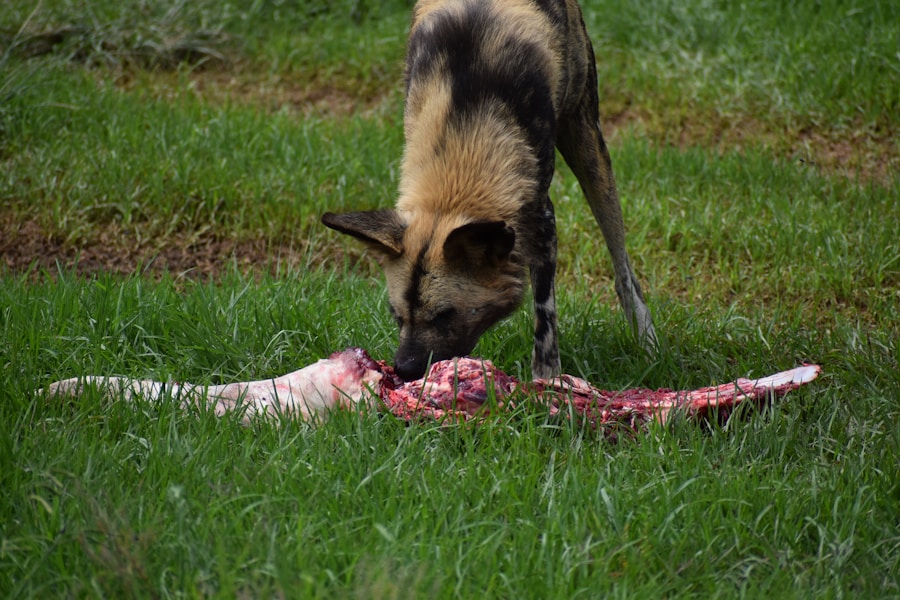Hypoallergenic dog food is specially formulated to minimize the risk of triggering allergic reactions in dogs. Just like humans, dogs can develop allergies to certain ingredients in their food, which can lead to a range of symptoms such as itching, digestive issues, and skin problems. Hypoallergenic dog food is designed to eliminate common allergens and provide a balanced diet for dogs with sensitivities. This type of dog food typically contains limited ingredients, with a focus on high-quality proteins and carbohydrates that are less likely to cause allergic reactions. It may also be free from common allergens such as wheat, soy, and dairy.
Hypoallergenic dog food comes in various forms, including dry kibble, wet food, and even raw or freeze-dried options. Some brands also offer prescription hypoallergenic diets that are specifically tailored to address certain allergies or sensitivities in dogs. It’s important to note that hypoallergenic dog food is not a one-size-fits-all solution, and it may take some trial and error to find the right formula for your pet. Additionally, it’s always best to consult with a veterinarian before making any significant changes to your dog’s diet, especially if they have a history of allergies or sensitivities.
Common Allergens in Dog Food
There are several common allergens in dog food that can trigger allergic reactions in dogs. These include ingredients such as beef, chicken, dairy, wheat, soy, and corn. Proteins from animal sources are often the most common culprits when it comes to food allergies in dogs, with beef and chicken being the top offenders. Grains such as wheat, soy, and corn are also known to cause allergic reactions in some dogs. Additionally, artificial additives and preservatives found in many commercial dog foods can also contribute to allergies and sensitivities in dogs.
It’s important to note that not all dogs will have the same allergic reactions to these common allergens. Some dogs may be sensitive to one specific ingredient, while others may have multiple allergies. This is why hypoallergenic dog food is formulated to eliminate these common allergens and provide a safer alternative for dogs with sensitivities. By avoiding these potential triggers, hypoallergenic dog food aims to reduce the risk of allergic reactions and improve the overall health and well-being of dogs with food allergies.
Choosing the Right Hypoallergenic Dog Food for Your Pet
When it comes to choosing the right hypoallergenic dog food for your pet, there are several factors to consider. First and foremost, it’s important to identify any specific allergies or sensitivities that your dog may have. This may require consulting with a veterinarian and conducting allergy testing to pinpoint the exact triggers for your dog’s allergic reactions. Once you have a better understanding of your dog’s specific dietary needs, you can begin looking for hypoallergenic dog food options that align with those requirements.
When selecting hypoallergenic dog food, it’s important to look for high-quality ingredients that are less likely to cause allergic reactions in dogs. This may include limited ingredient formulas that focus on a single protein source and a simple carbohydrate source. It’s also important to consider the overall nutritional content of the dog food, ensuring that it provides a balanced diet with essential vitamins, minerals, and nutrients. Additionally, you may want to consider the form of hypoallergenic dog food that best suits your pet’s preferences and dietary needs, whether it’s dry kibble, wet food, or raw options.
Reading Dog Food Labels: What to Look For
When shopping for hypoallergenic dog food, it’s essential to carefully read and understand the labels on the packaging. This can help you make informed decisions about the quality and suitability of the dog food for your pet. Look for clear indications that the dog food is hypoallergenic and free from common allergens such as beef, chicken, dairy, wheat, soy, and corn. Additionally, check for information about the specific protein and carbohydrate sources used in the formula, as well as any added vitamins and minerals.
It’s also important to pay attention to any artificial additives or preservatives that may be included in the dog food. These can potentially trigger allergic reactions in some dogs, so it’s best to opt for hypoallergenic dog food that is free from unnecessary additives. Look for natural and wholesome ingredients that are easily digestible and less likely to cause sensitivities in dogs. Finally, consider the guaranteed analysis on the label, which provides information about the nutrient content of the dog food. This can help you ensure that the hypoallergenic dog food meets your pet’s specific dietary needs.
Transitioning Your Dog to Hypoallergenic Food
Transitioning your dog to hypoallergenic food should be done gradually to minimize any potential digestive upset or resistance to the new diet. Start by mixing small amounts of the new hypoallergenic dog food with your dog’s current food, gradually increasing the proportion of the new food over several days or weeks. This slow transition allows your dog’s digestive system to adjust to the new diet and reduces the likelihood of any adverse reactions.
It’s important to monitor your dog closely during this transition period for any signs of digestive issues or allergic reactions. If you notice any concerning symptoms, such as vomiting, diarrhea, or excessive itching, consult with a veterinarian for guidance on how to proceed. Once your dog has successfully transitioned to the hypoallergenic food, continue to monitor their response and overall well-being to ensure that the new diet is suiting their needs.
Monitoring Your Dog’s Response to Hypoallergenic Food
After transitioning your dog to hypoallergenic food, it’s crucial to monitor their response and overall well-being on an ongoing basis. Keep an eye out for any signs of allergic reactions or sensitivities, such as itching, skin problems, digestive issues, or changes in behavior. If you notice any concerning symptoms, consult with a veterinarian to determine the best course of action.
In addition to observing your dog’s physical health, pay attention to their energy levels, coat condition, and overall demeanor. These can all be indicators of how well your dog is responding to the hypoallergenic diet. If you notice improvements in these areas, it’s a good sign that the new diet is suiting your pet’s needs. However, if you have any concerns about your dog’s response to the hypoallergenic food, don’t hesitate to seek professional guidance from a veterinarian.
Consulting with a Veterinarian about Hypoallergenic Dog Food
Before making any significant changes to your dog’s diet, especially when it comes to addressing allergies or sensitivities, it’s essential to consult with a veterinarian. A veterinarian can help you identify any specific allergies or sensitivities that your dog may have and provide guidance on choosing the right hypoallergenic dog food for your pet. They may also recommend allergy testing or other diagnostic measures to pinpoint the exact triggers for your dog’s allergic reactions.
In addition to helping you select the most suitable hypoallergenic dog food for your pet, a veterinarian can provide valuable insights into monitoring your dog’s response to the new diet and making any necessary adjustments along the way. They can also offer advice on transitioning your dog to hypoallergenic food and provide ongoing support as you navigate your pet’s dietary needs. By working closely with a veterinarian, you can ensure that your dog receives the best possible care and nutrition tailored to their specific allergies or sensitivities.
In conclusion, hypoallergenic dog food is designed to minimize the risk of triggering allergic reactions in dogs by eliminating common allergens and providing a balanced diet for dogs with sensitivities. When choosing hypoallergenic dog food for your pet, it’s important to consider their specific dietary needs and carefully read labels to ensure that the food is free from potential allergens and contains high-quality ingredients. Transitioning your dog to hypoallergenic food should be done gradually, and it’s crucial to monitor their response and overall well-being throughout this process. Consulting with a veterinarian about hypoallergenic dog food can provide valuable guidance and support as you navigate your pet’s dietary needs and ensure their health and well-being. By taking these steps, you can help your dog thrive on a hypoallergenic diet tailored to their individual needs.





